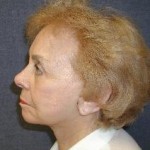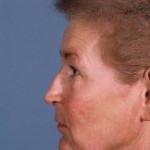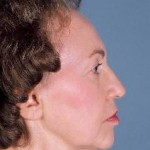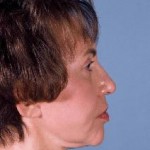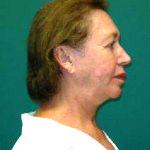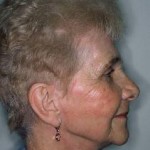Facelift
Also known as Rhytidectomy, a Facelift is a surgical procedure to improve visible signs of aging in the face and neck.
Why A Facelift?
If the signs of aging visible in your face are a concern, a Facelift may be the solution. A Facelift is designed to improve upon the visible signs of aging that are apparent in the face and neck, such as:
- Sagging in the midface
- Deep creases below the lower eyelids
- Deep creases along the nose extending to the corner of the mouth
- Fat that has fallen or is displaced
- Loss of muscle tone in the lower face may create jowls
- Loose skin and excess fatty deposits under the chin and jaw
Additional Rejuvenation Procedures typically performed in conjunction with a facelift are a Brow Lift, to correct a sagging or deeply furrowed brow, and Eyelid Surgery to rejuvenate aging eyes.
What it won’t do: As a restorative procedure, a facelift does not change your fundamental appearance and therefore cannot stop the aging process.
A facelift can only be performed surgically; non-surgical rejuvenation treatments cannot achieve the same results, but may help delay the time at which a facelift becomes appropriate and complement the results of surgery.
Is A Facelift Right For Me?
A facelift is a highly individualized procedure and you should do it for yourself, not to fulfill someone else’s desires or to try to fit any sort of ideal image.
Facelift surgery is a good option for you if:
- You are physically healthy
- You don’t smoke
- You have a positive outlook and specific, but realistic goals in mind for the improvement of your appearance
Facelift Procedure
During your procedure, medication will administered for your comfort. The choices include intravenous sedation and general anesthesia, our skilled surgeons will discuss the best option for you during your initial consultation.
A variety of other procedures can further enhance the outcome of a facelift. They include:
- Soft tissue augmentation to improve the tone and texture of the skin
- Wrinkle reduction by injection or chemical peel
Depending on the degree of change you desire, your options include a Traditional Facelift, Limited Incision Facelift (Mini Facelift) or a Neck Lift.
Traditional Facelift
A Traditional Facelift incision often begins in the hairline at the temples, continues around the ear and ends in the lower scalp. Fat may be sculpted or redistributed from the face, jowls and neck, and underlying tissue is repositioned, commonly the deeper layers of the face and the muscles are also lifted.
Skin is redraped over the uplifted contours and excess skin is trimmed away. A second incision under the chin may be necessary to further improve an aging neck. Sutures or skin adhesives close the incisions. An alternative method uses shorter incisions at the temples, continuing around the ear and possibly within the lower eyelids or under the upper lip.
Limited Incision Facelift or commonly referred to as “Mini Facelift”
An Limited Incision Facelift uses generally less dissection, possible shorter incisions at the temples, continuing around the ear and possibly within the lower eyelids or under the upper lip.
Neck Lift
Sagging jowls, loose neck skin and fat accumulation under the chin may be corrected with a neck lift. The neck lift incision often begins in front of the ear lobe and wraps around behind the ear ending in the lower scalp.
In certain individuals, neck skin can be directly excised, and the neck tightened, sometimes as an office procedure. Discuss this with your doctor if you are a candidate.
Recovery and Results
Once your procedure is completed, a bandage may be placed around your face to minimize swelling and bruising. There may also be a thin tube present to drain any excess blood or fluid that collects under the skin.
You will be given specific post-operative instructions that may include:
- How to care for the surgical site
- Medications to apply or take orally to aid healing and reduce the potential for infection
- Specific concerns to look for at the surgical site
- Follow-up instructions
Once healed, the incision lines from a facelift are well concealed within the hairline and in the natural contours of the face and ear.
It may take several months for swelling to fully dissipate and up to 6 months for incision lines to mature. This depends on the amount of surgery performed to achieve your result.
Life-long sun protection will help to maintain your rejuvenated appearance by minimizing photo-aging or sun damage. In addition, a healthy lifestyle will also help extend the results of your rejuvenated, more youthful appearance.
Be sure to ask questions: It’s very important to address any concerns you have with our experienced staff. All successful surgeries begin with open and honest communication between doctor and patient. Are you considering plastic surgery? Contact us to schedule a consultation and let us educate you about your options and the procedures available.


